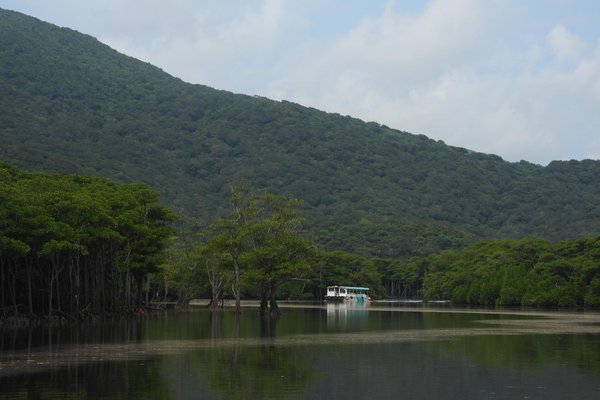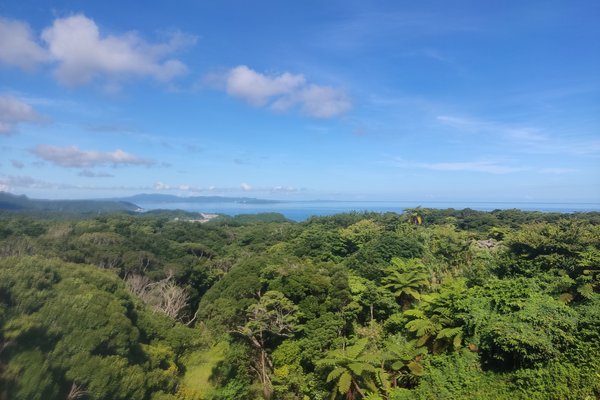Japan
Amami-Oshima Island
Amami-Oshima Island, Tokunoshima Island, Northern part of Okinawa Island, and Iriomote Island are part of an isolated archipelago that is characterized by high proportions of endemic and rare species.
The area became separated from the Eurasian continent after the formation of the Okinawa Trough in the Miocene, and species further evolved independently. It has a warm and humid subtropical climate and is covered with subtropical rainforests that harbour diverse fauna and flora such as the endemic Amami rabbit, the flightless Okinawa Rail and the critically endangered Iriomote leopard cat.
Community Perspective: Matejicek, CugelVance and Svein visited Yambaru NP in Northern Okinawa, and Zoë and Els visited Iriomote Island on a day trip from Ishigaki by ferry (to the ports of Uehara and Ohara, respectively).
Site Info
Official Information
- Full Name
- Amami-Oshima Island, Tokunoshima Island, Northern part of Okinawa Island, and Iriomote Island (ID: 1574)
- Country
- Japan
- Status
-
Inscribed 2021
Site history
History of Amami-Oshima Island
- 2021: Inscribed
- Inscribed
- 2018: Requested by State Party to not be examined
- After a Deferral advice by IUCN because of integrity issues and a suggestion to drop crit IX.
- Type
- Natural
- Criteria
- x
Links
- UNESCO
- whc.unesco.org
- Official
All Links
UNESCO.org
- whc.unesco.org — whc.unesco.org/
Official Website
News Article
- May 14, 2025 bbc.com — How a concrete seawall split this Japanese island village
- Sept. 4, 2024 japantimes.co.jp — Japan declares eradication of mongoose on World Heritage island
- May 28, 2024 www3.nhk.or.jp — Invasive alien frog rapidly spreading on UNESCO World Heritage site in Japan
- Aug. 26, 2023 stripes.com — US, Japan agree to protect UNESCO sites on Okinawa, including former jungle training area
- Oct. 9, 2021 mainichi.jp — Illegal digging of endangered orchid suspected on World Heritage island in Japan
- Oct. 7, 2021 asahi.com — World Heritage islands forced to take measures to protect nature
Community Information
- Community Category
- Wildlife habitat: Flora
Travel Information
Recent Connections
-
Multiple biogeographic realms
Of the four components, Iriomote is in … -
Dark-sky preserve
Iriomote-Ishagiki National ParkSee dark…
-
Over 300 bird species
394 birds (AB ev)
Connections of Amami-Oshima Island
- Geography
-
-
East China Sea
The four islands are on a chain located in the southwest of Japan. The serial site forms an arc on the boundary of the East China Sea and Philippine Sea. (ab ev) -
Archipelagos
The four islands are part of the Ryukyu Islands, a chain of Japanese islands that stretch southwest from Kyushu to Taiwan.See en.wikipedia.org
-
Dark-sky preserve
Iriomote-Ishagiki National ParkSee darksky.org
-
- Trivia
-
-
Dubbed as another WHS
Iriomote: "Galapagos of the East"
-
- Ecology
-
-
Multiple biogeographic realms
Of the four components, Iriomote is in the Indo-Malayan realm, while the others (much further north) are in the Palaearctic realm. -
Endemic Bird Species
The nominated property is also part of an Endemic Bird Area (EBA), Nansei Shoto (AB ev) -
Cloud forest
Mt. Yuwandake (694 m) in Amami-Oshima Island is the highest peak in the nominated property, and Tokunoshima Island (a) has Mt. Inokawadake with an altitude of 645 m. The forests of these mountains that are located at the height of 500–600 m or more constitute cloud belts, where sunlight is limited and air humidity is high. Similarly, on the slopes of Mt. Yonahadake (503 m), the highest peak in Okinawa Island, and Mt. Iyudake (446 m), there are cloud forests. (Nomination text, p. 30) -
Mangroves
In Japan, mangrove forests covering a decent amount of space can be seen only in the Ryukyu Chain in which the nominated property is included. Among them, the mangrove forest at the mouth of the Sumiyo River in Amami-Oshima Island is the most northern. In Iriomote Island, mangrove forests are found at the mouths of the Nakama River, the Urauchi River, and the Shiira River, etc. (Nomination text, p. 32) -
Bird Migrations
It is situated along a migration route for birds travelling a long distance between the Northern and Southern Hemispheres. (Nomination text, p. 41) -
Feral Animals
The management of the nominated property is contending with many invasive alien species as well as feral cats and several measures have been put in place to address the issue. (Ab Ev) -
Eagles
Crested serpent eagle (Spilornis cheela perplexus) (Nomination file, p. 66) -
Endemic Species that include the WHS name
Amami RabbitSee en.wikipedia.org
-
Over 300 bird species
394 birds (AB ev) -
Rainforests
subtropical rainforests (AB ev) -
Critically endangered fauna species
Muennink's spiny rat, endemic to Okinawa Island, is a critically endangered species. It is found only on the northern part of the island, above 300 m, and is thought to inhabit an area of less than 3 km2. (Wikipedia - Muennink's spiny rat) -
Turtles and tortoises
The Ryukyu black-breasted leaf turtle is an endemic endangered species. (Exec summary p13)
-
Notable examples of multiple speciation in one site
There are abundant examples of diverse speciation and endemic species in the nominated property. Spiny rats form an endemic genus consisting of three species (Tokudaiada osimensis, T. tokunoshimensis, T. muenninki) endemic to each of the three regions of the nominated property in the Central Ryukyus. (Executive summary, p. 13) -
Salamanders
Sword-tail newt (Cynops ensicauda), Anderson's crocodile newt (Echinotriton andersoni) (Executive summary, p. 27)
-
- World Heritage Process
-
-
Inscribed on a single criterion only
X -
Extended from original TWHS
Amami-Oshima Island - The 2019 nomination includes a merge and combination of 24 small and scattered component parts into five larger component parts, as well as the integration of a part of the Northern Training Area, a military area returned to Japan from the USA, into the Okinawa Island component part. (Ab Ev)
-
- WHS on Other Lists
-
-
Plant WHS not in a CPD
"The subtropical rainforests of the property are the largest remaining in the region and harbour a very rich flora and fauna, boasting at least 1,819 vascular plants" (OUV) -
WWF Global 200
Terrestrial, Tropical and Subtropical Moist Broadleaf Forests: (32) Nansei Shoto Archipelago Forests.See web.archive.org
-
Located in a TCC Territory
Ryukyu Islands -
Alliance for Zero Extinction
overlaps with .. two Alliance for Zero Extinction sites (AB ev) -
Biodiversity hotspot
Japan
-
- Timeline
-
-
Miocene
The formation of the Okinawa Trough in late Miocene resulted in the separation of a chain from the Eurasian Continent, forming an archipelago of small islands. Terrestrial species became isolated on these small islands and evolved to form unique and rich biota. (AB ev)
-
News
- bbc.com 05/14/2025
- How a concrete seawall split this …
- japantimes.co.jp 09/04/2024
- Japan declares eradication of mong…
- www3.nhk.or.jp 05/28/2024
- Invasive alien frog rapidly spread…
Recent Visitors
Visitors of Amami-Oshima Island
- Alexander Lehmann
- Bram de Bruin
- Brett Baumann
- christof
- Christravelblog
- CugelVance
- cwthong
- Els Slots
- Eva Kisgyorgy
- Fan Yibo
- Frederik Dawson
- George Gdanski
- Harry Mitsidis
- henrik_hannfors
- Joyce van Soest
- Karito Vies
- Kasper
- Kurt Lauer
- lichia
- Lukasz Palczewski
- Maciej Gil
- Matejicek
- NoahFranc
- Pat Martin
- Patrik
- Philipp Peterer
- Randi Thomsen
- Stanislaw Warwas
- Svein Elias
- Tonisan
- usagi1974
- Valentina
- Xiong Wei
- Zoë Sheng
Community Reviews
Show full reviews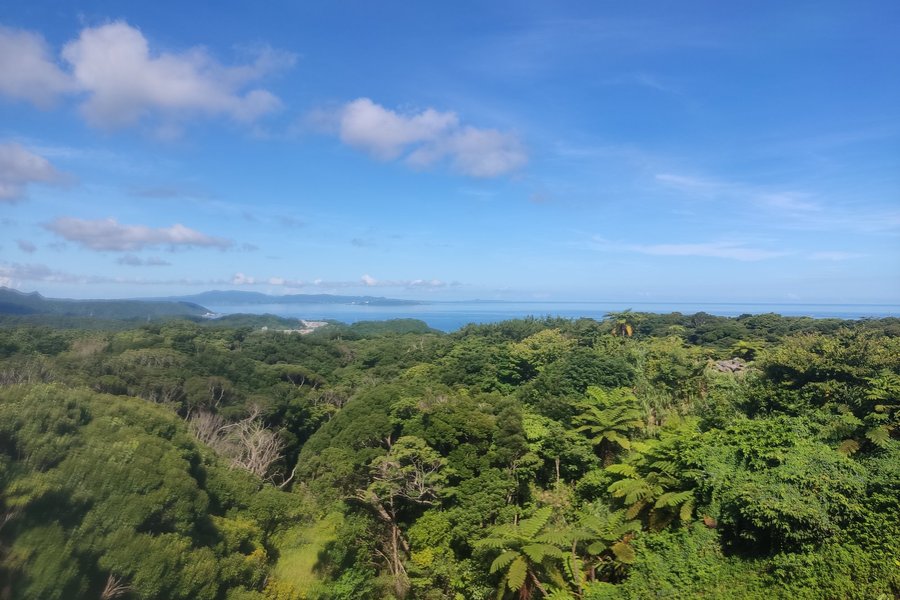
Time of the visit: june the 26th+27th,2025
I took one of the hourly buses in Naha, Okinawa's capital, to Nago, the second biggest city on that island. My intention was to kill two birds with one stone, visiting Nago and the world heritage site. I locked my luggage in the lockers at the Nago bus station. Nago was a disappointment. Nago turned out to be a faceless little town, only the beach was really worth mentioning. Bus 67 connects Nago to the north. It had been incredibly hot until the bus departed. During the journey, it poured with heavy rain. I somehow forgot to buy a SIM card when I arrived at the airport, and afterward, I simply had no time and no possibility to buy one.I communicated with the owner of the jungle guesthouse via email, as I couldn't phone him (he didn't speak English anyway), nor did he have WhatsApp or telegram. He wanted to pick me up at the nearest bus stop, "Okuma Beach." Conveniently, the last grocery store is right next to the stop: a Family Mart convenience store. I recommend anyone following this route to stock up on drinks, food, and instant soups there.
The guesthouse turned out to be the last building before leaving civilization. I had booked a spot in the traditional common room for a small fee. There were no other guests, and I had the entire building to myself. I was offered a room, but I preferred the large common area. …
Keep reading 0 comments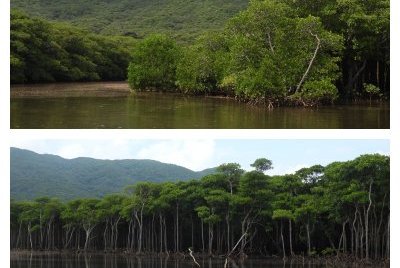
Let’s first set some things straight about this WHS. I propose a name change: “Subtropical Rainforests of the Ryukyu Archipelago” would cover it much better than the enumeration of the names of 4 islands as cumbersome as Kluane / Wrangell-St. Elias / Glacier Bay / Tatshenshini-Alsek. And: Iriomote Island actually is the main component. It’s the largest, the least developed and the most ‘different’ as it lies in a different biogeographic realm from the rest: the Indomalayan instead of the Palearctic.
Still, even Iriomote is no Ogasawara. It can easily be reached by ferry from neighbouring Ishigaki, a tacky holiday island that has a busy airport. Iriomote sees a whopping 352,000 tourists a year according to IUCN in its evaluation (I don’t think they’re back to those numbers yet after Covid, there were only about 30 passengers on my ferry). The core zone of the WHS comprises about 90% of the island, it includes everywhere where there are no roads.
I hadn’t booked anything in advance, but right off the ferry, I could join a ‘Mangrove Cruise’ that departed from a neighbouring pier. It may be the most touristy thing to do on the island, but it will get you definitely into the core zone and you will be surrounded by its OUV – so what more could I want? We were only 8 persons on a boat that could hold 60, so there was ample room to move between the left and right sides in …
Keep reading 0 comments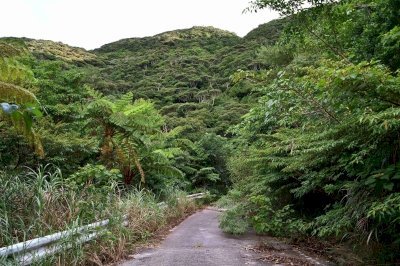
Yamburu National Park resides in the northern part of Okinawa Island and a part of this whs. Our visit was late June.
By rental car the toll road highway took us from Naha Airport to the site. Arriving in the evening we took only a quick drive through the core of the park on narrow, overgrown roads and made plans for the next day.
After a night at the Ada Garden Hotel (remember to book half board) on the eastern side we re-entered the park, that is after we could watch the endemic Okinawa rail bird just outside the hotel. Another hotel guest told us she’d been here 8 years, but never seen it until now. Driving into the park we also spotted the tiny wild boar along the road.
We had decided for two hikes in the park, the first one to the peak of the National Park, Mount Yohana (no entrance fee). From the starting point we loaded up with insect spray, water and wandered off.
It’s a 2-hour hike return trip with only 200 m of elevation. The dense vegetation makes it hard to get an overview, so we focused on plants and hope to see some animals. The latter were sparse. There were insects and we could hear a lot of birds but saw only a few. The path was rocky, muddy, flat to steep (so bring good shoes). It was early morning so not so hot, but very humid.
The …
Keep reading 0 comments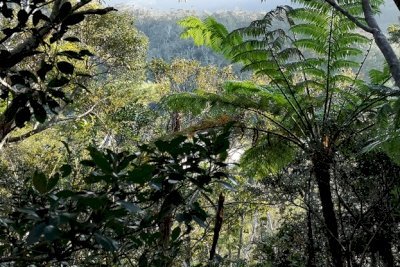
This TWHS had quite positive recommendations from IUCN in 2018. After deferral, I believe that the modified nomination that followed all the recommendations has high chance to be inscribed in 2020. It consists of 4 islands (Amami-Oshima, Tokunoshima, Northern Okinawa, and Iriomote) covered by subtropical forest southwest from Japan mainland. In original nomination, it was proposed for criterions (ix) ecological processes and (x) biodiversity and endemic species. New nomination for 2020 focuses only on the criterion (x), since the islands represent biodiversity hotspot of isolated islands in Pacific Ocean with numerous endemic and endangered species such as Amami rabbit, Okinawa rail, Okinawa woodpecker, Amami woodcock, Iriomote cat, and several kinds of endemic rats, turtles, lizards, newts and frogs among others. It is clear that animal species are not very spectacular, thus I do not expect that this site will be overwhelmed by tourist industry even after the inscription.
I visited only Okinawa component (partly in March 2016 – see my “un-official” review below, and more thoroughly in November 2019), but I would like to visit more islands in the future. Actually, Northern parts of Okinawa Island is the most problematic component because of the issue with the US military training areas. Some areas were returned to Japan very recently and joint to Yanbaru National Park as well as to the core zone of the nomination, but it is still a controversial point.
In November 2019, I spent 2 days/3 nights in Yanbaru National Park in the area of …
Keep reading 0 comments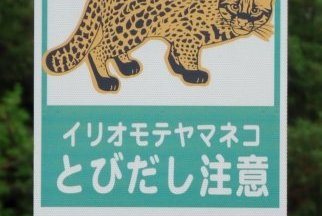
Iriomote is usually a day trip from Ishigaki by ferry. Whereas it is possible to stay longer it is not easy to figure out accomodation. Best and easiest way to see the forest is the boat tiur to the waterfalls. Along the way is a Japanese guide and you can try to follow with English notes but most people got lost really quickly. It is still beautiful on the way. Once you arrive the tour continues as a hike for about 2h which is rather muddy and steep at points. That is why you got boots at the start of the tour. You will be rewarded with great views at the lookout points where you can have a rest. Some people only walked to the first stop and back. The time is a little tight to see both anyway. The guides also did not accompany you as they go back and forth with other guests.
The most sought after sight on the island are the endemic Iriomote cats, a subspecies of leopards only found here. They say the chance to see one is really low. They are protected and the numbers have plummeted before protection but they are still really shy animals.
Highly recommend.
Keep reading 0 comments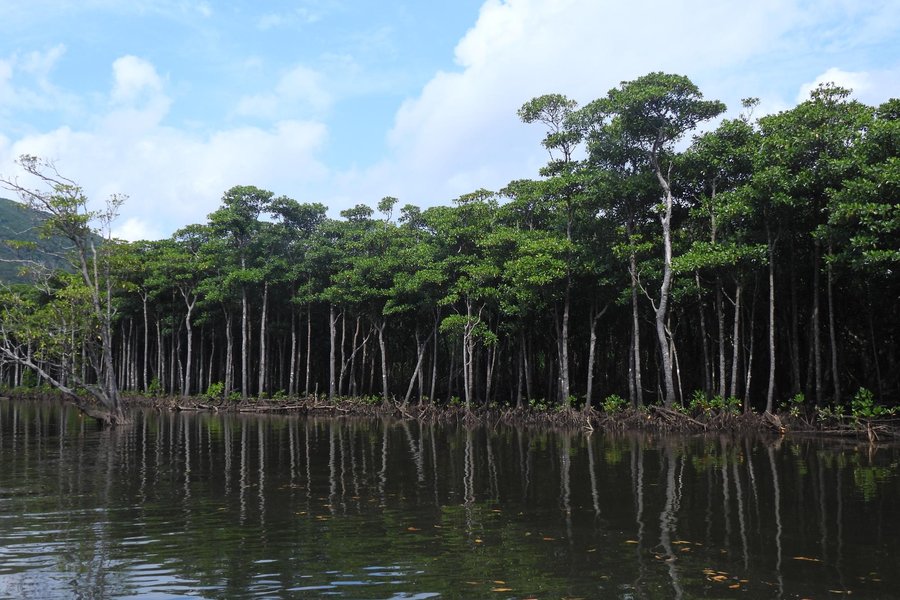
I visited Okinawa island in March last year. According the locals, March-April would be the best time to visit and explore the island in order to avoid winter cold, summer hot&humidity, monzoon of May, and typhoons of fall.
The Yanbaru forest is located in the norden part of the island, and Nago is the best place to stay&go further to north. This part of the island is quite remote, and due to the infrequent public transport - which I used to visit Hiji falls protected area, renting a car would be better and more efficient alternative.
It was a bit rainy day, however for visiting of subtropical rain forest it was an appropriate choice...
I like very much such areas, and I can compare my experience to Laurisilva of Madeira, or in a certain extent also to beech forests of Slovakia (both are WHS). So, I enjoyed my visit a lot, but I have to admit that no everyone would enjoy seemingly boring densely forested areas with a minimum of viewpoints or spectacular flora and fauna.
In the summary, I strongly support the inscription to protect the forested area inhabited by numerous endemic species that might be endangered mainly by military preasures in the area.
Keep reading 0 comments
